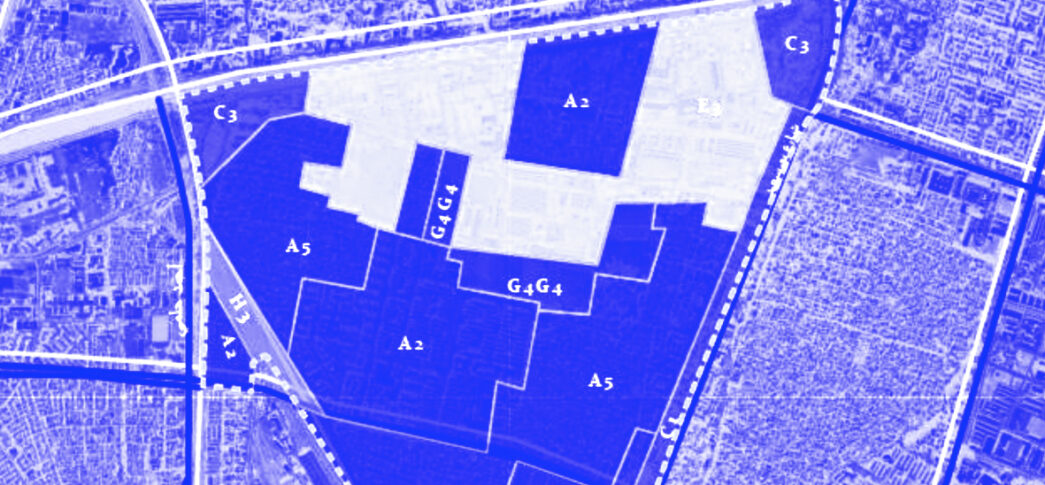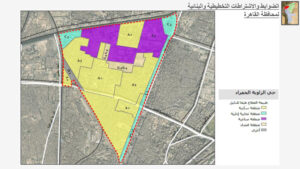
- Published on 29 April 2021
The government imposed a nation-wide lockdown and night-time curfew in April 2020 through the emergency law as part of its measures to control the coronavirus pandemic. Any illegal construction or destruction of arable land (tabwir) would face trial by the exceptional Supreme State Security Prosecutor.[1] One month later, the president decreed an unprecedented six-month freeze on all building construction in Cairo, Giza and Alexandria.[2] Under the Unified Building Law, only freezes on new construction permits can be enacted, making the presidential decree unprecedented.[3] Exempted from this freeze were non-residential projects, government projects, and any construction in the so-called new cities, which the state-owned New Urban Communities Authority (NUCA) administers, and are thus independent from the Ministry of Local Administration’s jurisdiction that the building freeze targeted.
In practice, over 16,000 civilian builders and owners that violated the freeze were referred to the Military Prosecution by July,[4] which may have acted as a strong deterrent against informal construction that the government feared would spike during the pandemic.
During the six-month freeze, special committees were set up by the Ministry of Local Administration to review already issued building permits to ensure local councils adhered to the building law.[5] 175,000 permits were collected, and 20,000 were reviewed over the course of the year.[6] Any new permits given after the freeze would have to adhere to new zoning regulations that significantly lowered the allowable population density of cities and particular districts. This was, after all, a “golden opportunity to regulate the built environment” as the housing minister stated in one of the meetings[7]–a contrasting reference to the ‘unregulated’ state of affairs blamed on informal construction.
In August 2020, draft planning and construction standards for Cairo’s districts were leaked.[8] The main changes comprised detailed rules for each district as well as sub-districts depending on an assessment of their current population and built-up densities, as well as whether the government saw them as planned or informal. Obvious rules imposed on future development of land plots include the shrinking of the allowable built-up areas, preventing new construction from abutting neighbouring buildings by establishing setbacks all around the plots, lowering building heights than those currently allowed, and establishing strict rules for non-residential uses. Some sections of Cairo’s neighbourhoods were deemed too overcrowded for new residential construction until detailed plans were prepared and passed, and new residential construction may not be allowed.

Figure 1: A sample of the planning and building controls and requirements project for a neighborhood in Cairo Governorate (Ain Shams University 2020)
By the end of the construction freeze in September, the new zoning codes were yet to be passed. Instead, interim regulations were enacted in December,[9] outlining blanket regulations for building heights, densities, and uses. In April 2021, the Prime Minister announced that a pilot phase in certain districts would be implemented from May, to be expanded to all governorates from July.[10] They would also constitute a new, more rigorous – and complicated – process to obtain building permits that include approvals or oversight from select public universities, the Armed Forced Engineering Authority as well as civilian and military survey authorities.[11]
Impact
At this point in time, any projection on impact is speculative. Already some commentators believe the de-densification of future development would lead to an increase in home prices because of the restriction of supply versus demand. However, the high level of vacancy in most cities shows that a quantitative housing shortage is not imminent, while restricted supply in the older districts may push demand more towards the new cities – very much desert suburbs. On the other hand, the stricter regulations imposed on land and future development may negatively affect land values, thus easing pressure on real estate prices and possibly improving affordability.
As for the new building permit regulations, Parliament’s Local Development Committee head MP Ahmed al-Sagini, only 8000 out of 20,000 building permits reviewed were found to comply with the building law.[12] While this may be a strong indicator of corruption in the current building permit regime overseen by local municipalities, it also highlights problems with implementing and interpreting the regulations which can be overcomplicated or based on outdated plans and maps.[13] Ultimately, for the new regulations to succeed in facilitating spatial justice, is more simplification and flexibility, rather than the opposite.
[1] ‘Prime Ministerial Decree 941/2020’ (2020), https://www.cc.gov.eg/i/l/402636.pdf
[2] Al-Shorouk, ‘Al-Sisi yuwajih al-hukuma bi waqf “amaliyat al-bina” bi shakl kulli fi 3 muhafazat’, 21 May 2020, https://www.shorouknews.com/news/view.aspx?cdate=21052020&id=7b981074-b63b-4a61-b911-a43f8b0f0daa; ‘Minister of Local Administration Decree 181/2020’ (2020), https://www.diigo.com/item/image/2r7n0/ij81
[3] Art. 44 ‘Law 119/2008’, Unified Building Law (Including amendments) § (2008), https://www.cc.gov.eg/legislation_single?id=405291
[4] Al-Ahram, ‘Al-Wuzara’: Ihalat 16 Alf Mukhalafat Bina’ Ila al-Niyaba al-’askariya’, 7 July 2020, http://gate.ahram.org.eg/News/2436561.aspx
[5] MoLD, ‘Wazir al-tanmiya al-mahaliya yusdir qarar tashkil ligan fahs tarakhis al-bina’’, 12 June 2020, https://www.mld.gov.eg/ar/news/details/8277
[6] Invest-Gate, ‘Invest-Gate Launches Roundtable for New Building Requirements’, 28 April 2021, https://invest-gate.me/news/invest-gate-launches-proposals-for-new-building-requirements-with-participation-of-major-developers/
[7] NUCA, ‘Wazira Al-Iskan Wal-Tanmiya al-Mahaliya Wa 3 Muhafizin Yutabe’un i’dad al-Ishtiratat al-Takhtitiya Wal-Bina’iya Li Dabt al-’umran’, 28 July 2020, http://newcities.gov.eg/dis_N_17-3-2019.aspx?ID=1515
[8] Ain Shams University, ‘Mashru’ i’dad al-Ishtiratat al-Takhtitiya Wal-Binaíya Li-Madinat al-Qahira’, August 2020, https://drive.google.com/file/d/1vRPydSm3Ilpo8J8Gox2LXCCXGySJDlu3/view
[9] Arab Republic of Egypt, ‘Al-Dawabit Wal-Ishtiratat al-Takhtitiya Wal-Binaíya Lil-Mudun al-Misriya’, December 2020, https://www.diigo.com/user/arshifalomran/b/576932625
[10] Al-Ahram, ‘Raeis Al-Wuzara’: Bid’ al-Tatbiq al-Tajribi Li-l-Ishtiratat al-Bina’iya al-Jadida Wal-Tarakhis al-Jadida Mayo al-Muqbil’, 5 April 2021, https://gate.ahram.org.eg/News/2686088.aspx
[11] Al-Masry al-Youm, ‘Al-masry al-youm tanshur khutwat tatbiq manzumat tarakhis al-bina’ al-jadida’, 9 April 2021, https://www.almasryalyoum.com/news/details/2307885
[12] Invest-Gate, ‘Invest-Gate Launches Roundtable for New Building Requirements’
[13] Ali Al-Moghazy, ‘Forced Informality: When Housing Rights and Building Laws Collide’, Built Environment Observatory, April 2018, http://marsadomran.info/en/policy_analysis/2018/04/1511/
